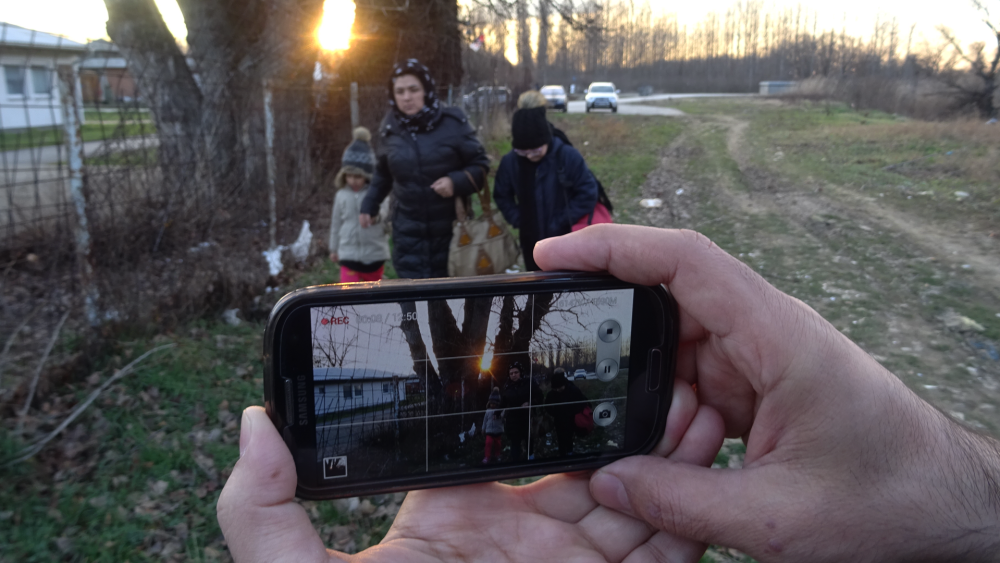Midnight Traveler
Director/ Hassan Fazili
Watched on Amazon
Rating 2/5
Hassan Fazili’s first-person home movie comes with the usual patchwork of funders’ logos displayed in the credits, signaling that the film has been blessed and packaged and delivered with the documentary industry’s collective stamp of approval; its importance and relevance and quality-controlled bona fides are meant to shield it from critical challenge. It comes to a viewer as a received work, not as an act of artistic expression; to discuss it as art is a pointless exercise. It is not meant to be criticized or debated. It is simply a commodity to be traded within the finite array of prestigious film festivals and assigned to fill the desirable slots of the second tier festivals. It had its run through these rarified venues before being purchased and then distributed to a handful of streaming sites.
In sum, Midnight Traveler is like any of the other handpicked pre-loaded and pre-lauded documentaries that make the rounds of the non-fiction film universe: Small stories adrenalized for maximum dramatic punch; thin and recognizable narratives dressed up in faux-profundity through tricks of editing and sound design; characters shorn of complexity for easy digestibility. And all bearing the imprimatur of an industry that drains the blood out of messy, real-life stories and distrusts unfiltered points-of-view, that cloaks any hint of personalized cinematic verve in formulas conceived in expensive post-production suites.
None of this is the fault of Hassan Fazili, or his family–which includes a wife and two young daughters–or the journey that forms the spine of his film. He was targeted by the Taliban for running a progressive artist’s café in Afghanistan and, after receiving a tip from a friend that he was going to be kidnapped and quite likely killed, he gathered up his wife and kids and embarked on a two-year escape through Iran, Turkey, Greece, Serbia and Hungary. The entire film was shot by the family and their friends on smartphones (there are several sweet and touching shots of Fazili’s daughters attempting to live normal childhoods within their tenuous situation). This is the hook used to sell the film’s appeal.
The footage, as you might expect, looks like it was indeed shot on phones. And most of it is remarkably mundane. I say remarkably because I expected the footage to be dynamic, harrowing, insightful, revealing, anything but what it is: conventional on one hand, and on the other, explicit with missed opportunities. Fazili’s family has a violent encounter on a Serbian street, but he wasn’t rolling when it happened. A nationalist Serbian gang and a group of Muslim refugees brawl outside the fence of their refugee camp, but Fazili only begins shooting after it ends. We see the family and others running through the countryside, but we don’t see who is chasing them. They spend a few frightening nights in the woods, but their phone batteries died before enough footage could be gathered to form a sequence. Much of the exposition of their odyssey is explained in on-screen text, intercut with repetitive shots from the back seats of cars and long clips of the family waiting things out in dormitory rooms. The waiting–and the boredom–certainly reflects the reality of any refugee’s plight.
I’m sympathetic to the demands of shooting coherent footage under the difficult circumstances, but that left the filmmaking team (Fazili entrusted his video files to producer-editor, Emelie Coleman Mahdavian) with no choice but to juice up the material they were left with. Several moments in which nothing very dramatic is happening are accompanied by an ominous rumble on the soundtrack. Razor wire filmed against a burnished sky becomes a facile metaphor for the family’s lack of freedom. Shaky camerawork sliced into rat-a-tat montages substitutes for a lack of action. This is all very effective on one level–Mahdavian knows how to mask inactivity with resourceful editing–but it also is a thin disguise for the inertia that cripples the film. I couldn’t help but wonder if she sold the project to funders and distributors with a knockout pitch reel, but then had to scramble to live up to her own hype when the paucity of gripping images became clear.
There is another factor working against Midnight Traveler. As Manohla Dargis of the Times writes, the refugee “crisis has been well recorded in media accounts and in documentaries as dissimilar as The Human Flow and Fire at Sea. Whatever the good intentions behind this material — and the outrage and tears of empathetic readers and viewers — it is hard to gauge how all this documentation helps those most affected.” I have wondered for some time now when the curtain is going to drop on documentaries shot in the turbulent Middle East. The multitude of movies borne out of the various conflicts in the region all have eventually blurred together. How many filmmakers are doing great work in Africa, Latin America, Asia and even America who can’t get their films noticed because the myopic gatekeepers of the self-regarding documentary industry refuse to consider them?

